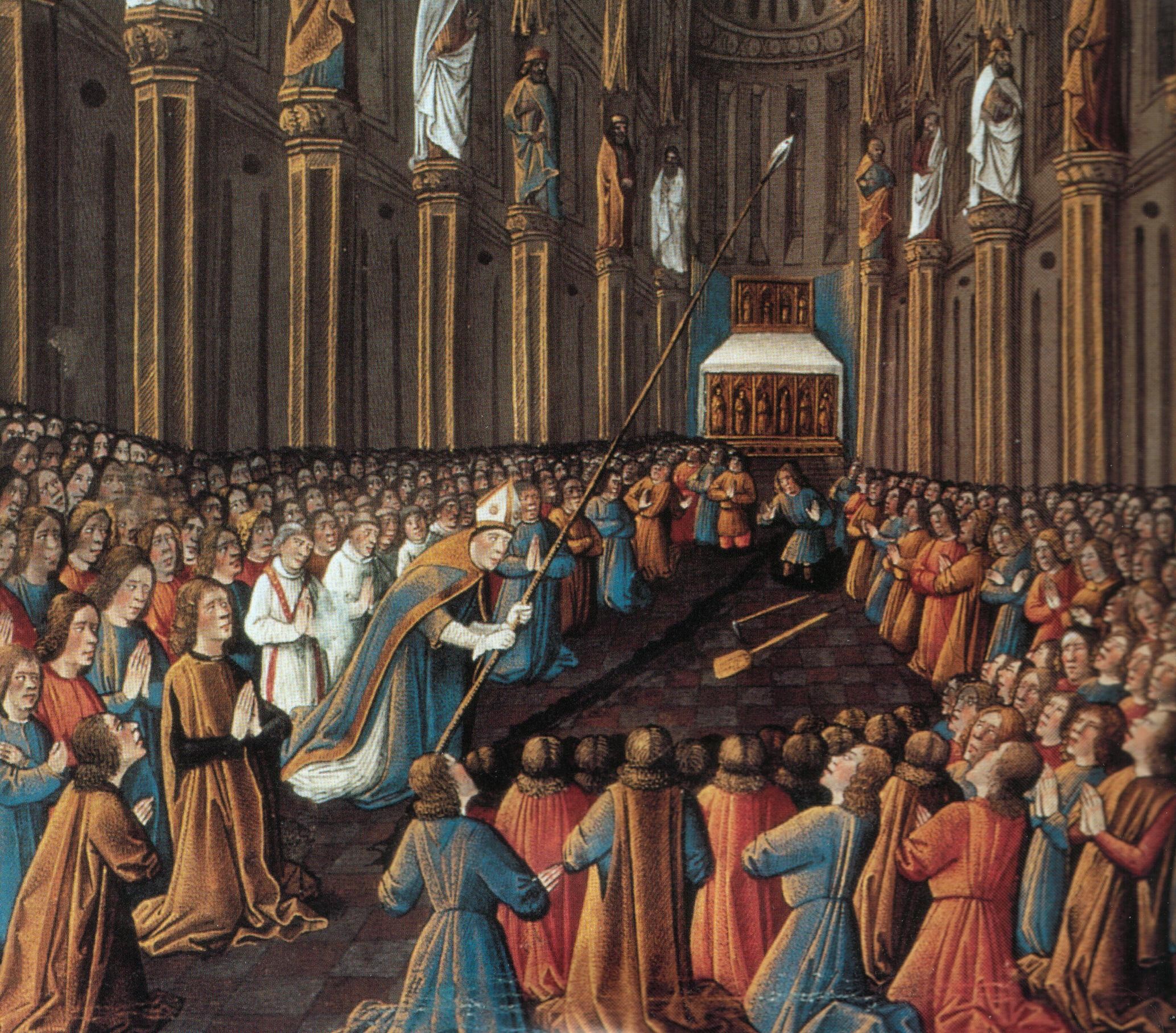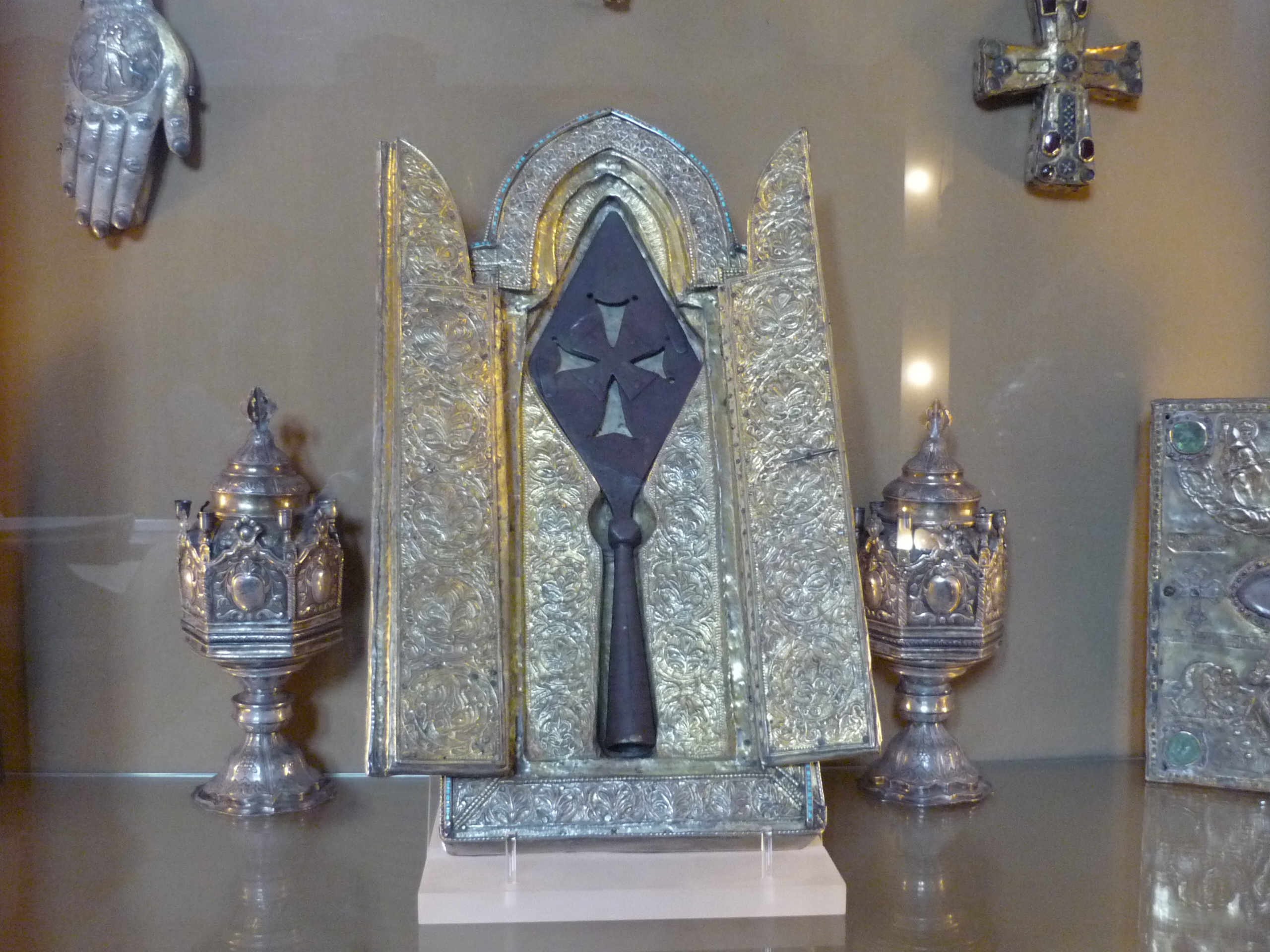 |
| Bishop Ademar of Le Puy holding Holy Lance in St. Peter Church, Antioch Source: wikimedia commons |
Holy Lance was acclaimed as spear that pierced Jesus side on the cross. It was believed that lance were kept in Jerusalem, however after Romans destroyed city was lost.
The spiritual leader of crusaders bishop Le Puy was skeptical (as one Holy Lance was already kept in Hagia Sophia) but as army morale was raised he hide his hesitation. When he died couple days later he was buried in the very the same place where Holy Lance had been found.
"But just two days after the papal legate’s death, Peter Bartholomew proclaimed that he had experienced his first visitation from Adhémar’s spirit and the process of appropriating his memory began. The bishop was buried in the Basilica of St Peter, within the very hole in which the Holy Lance had been discovered." Source: Asbridge, T. "The Crusades: The Authoritative History of the War for the Holy Land", Kindle edition
Coming back to Holy Lance history - first evidence came from Antoninus of Piacenza (A.D. 570) (often confused with Saint Antonius, archbishop of Florence in XV century), who reported from his pilgrimage to Jerusalem that in Basilica of Mount Sion (nowadays in this place is located Church of Holy Sepulchre) were kept holy relics an among them:
"the crown of thorns with which Our Lord was crowned and the lance with which He was struck in the side"
After capturing Jerusalem by Persians during reign of king Chosroes II an according to the "Chronicon Paschale", the point of the lance was taken by Nicetas, Roman ruler of this area. In 612 he took both point of Holy Lance and Holy Sponge to Constantinople and deposited it in the church of Hagia Sophia. At the time when Peter Bartholomew claim that he found lance in Antioch this point of the lance were still kept in Hagia Sophia and stay there until was presented by emperor Baldwin to Louis IX,king of France, by whom was enshrined with the Crown of Thorns in the Sainte Chapelle. During French Revolution Holy Lance and Crown of Thorns relics were removed to the Bibliotheque Nationale however only Crown of Thorns remain. Holy Lance was lost.
-3-2.jpg) |
| The Holy Lance Imperial Treasury at the Hofburg Palace in Vienna, Austria Source: wikimedia commons |
There is also third Holy Lance, kept among imperial insignia at Hofburg Palace, Vienna - was first used for coronation ceremony of the Emperor of the West at 1273
and is known as the lance of St. Maurice. In 1424 came to Nuremberg, and it is also probably the lance, known as that of the Emperor Constantine, which enshrined a nail or some portion of a nail of the Crucifixion. This lance is also famous as taken by Hitler as war talisman that will guarantee his military successes. He wasn't the first military commander that use Lance as war talisman.
and is known as the lance of St. Maurice. In 1424 came to Nuremberg, and it is also probably the lance, known as that of the Emperor Constantine, which enshrined a nail or some portion of a nail of the Crucifixion. This lance is also famous as taken by Hitler as war talisman that will guarantee his military successes. He wasn't the first military commander that use Lance as war talisman.
Charlemagne was proclaim was proclaimed as first king of Holy roman Empire at 800 AD. One enduring symbol of his rule was his possesion of the Holy Lance. He was the first in long, long line of rulers who use the Holy Lance to hold his empire together. In centuries to come it was eight Saxon kings of England, Henry I of Germany and Otto I of Austria. All will carry the Lance to battle all will win great victories.... Source: Ancient Mysteries:Quest for Holy Lance
The fourth one, least known, is preserved at Cracow, Poland but, though it is alleged to have been there for eight centuries, its earlier history is unknown.
But what happen with lance found by Peter? According to [2] it's preserved in Etschmiadzin, Armenia:
 |
| Crusades Holy Lance in Etschmiadzin cathedral Source: wikimedia commons |
"Raynaldi, the Bollandists, and many other authorities believed that the lance found in 1098 afterwards fell into the hands of the Turks and was that sent by Bajazet to Pope Innocent, but from M. de Mely's investigations it seems probable that it is identical with the relic now jealously preserved at Etschmiadzin in Armenia." Source: Catholic Encyclopedia
Primary sources:
[1] Asbridge, T. "The Crusades: The Authoritative History of the War for the Holy Land", Kindle edition
[2] Catholic Encyclopedia
[1] Asbridge, T. "The Crusades: The Authoritative History of the War for the Holy Land", Kindle edition
[2] Catholic Encyclopedia
No comments:
Post a Comment